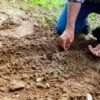Yellow jackets, those pesky insects with their distinctive black and yellow bodies, can quickly turn a pleasant outdoor gathering into a nightmare. Known for their aggressive behavior and painful stings, these creatures often build their hives in inconvenient places, posing a threat to humans and pets alike. However, with some proactive measures and awareness, you can create a yellow jacket-free zone around your home and enjoy the outdoors without fear. In this blog, we’ll explore various tips and tricks to keep these buzzing pests at bay.
Understanding Yellow Jackets
Before delving into prevention methods, it’s essential to understand the behavior and habits of yellow jackets. Unlike bees, yellow jackets are predatory wasps that scavenge for food and build their nests in various locations, including underground, in bushes, or even within the walls of buildings. They are attracted to sweet smells, such as food and beverages, making outdoor gatherings and picnics particularly appealing to them.
Yellow jackets are highly defensive of their nests and will aggressively defend them if they feel threatened. Each nest can contain thousands of individuals, increasing the risk of stings, especially in close proximity to their habitat.
Identifying Potential Nesting Sites
The first step in creating a yellow jacket-free zone is to identify potential nesting sites around your property. Common locations include:
- Ground Nests: Yellow jacket hives are often built in abandoned rodent burrows, under rocks, or in dense vegetation. Keep an eye out for small openings in the ground, especially in areas with sandy soil.
- Structures: Yellow jackets may also build nests within structures, such as sheds, attics, or wall voids. Look for signs of increased insect activity or buzzing sounds near these areas.
- Overhangs and Eaves: Pay attention to overhangs, eaves, and rooflines, as these areas provide sheltered locations for nest building.
Once you’ve identified potential nesting sites, you can take steps to discourage yellow jackets from establishing hives in these areas.
Proactive Prevention Methods
Prevention is key when it comes to managing yellow jacket populations around your home. By implementing the following proactive measures, you can reduce the likelihood of attracting these insects:
- Cover Food and Beverages: Always cover food and beverages to minimize the scent of sweet and sugary substances that attract yellow jackets when dining outdoors.
- Secure Trash Bins: Keep trash bins tightly sealed to prevent yellow jackets from scavenging for food scraps. Consider using bins with tight-fitting lids and emptying them regularly.
- Maintain Landscaping: Keep your lawn and landscaping well-maintained to eliminate potential nesting sites. Trim overgrown vegetation and remove debris from your yard.
- Seal Entry Points: Seal any cracks or openings in your home’s exterior to prevent yellow jackets from accessing potential nesting sites indoors.
- Install Traps: Place yellow jacket traps around your property to capture foraging workers and reduce the overall population. These traps typically contain a lure that attracts yellow jackets and prevents them from escaping.
- Avoid Bright Colors: Yellow jackets are attracted to bright colors, particularly yellow and white. Opt for darker clothing to avoid attracting these insects when spending time outdoors.
Dealing with Existing Nests
Despite your best efforts at prevention, you may still encounter existing yellow jacket nests on your property. If you discover a nest, it’s essential to proceed with caution and consider enlisting professional help for removal. Attempting to remove a nest without proper equipment and expertise can result in stings and potential harm.
If you prefer to tackle nest removal yourself, consider the following tips:
- Wait Until Evening: Yellow jackets are less active at night, making the evening the best time to approach a nest for removal.
- Wear Protective Clothing: Before approaching the nest, don protective clothing, including long sleeves, pants, gloves, and a veil or face mask to prevent stings.
- Use a Commercial Insecticide: Treat the nest with a commercial insecticide labeled for yellow jacket control. Follow the manufacturer’s instructions carefully and apply the product directly into the nest entrance.
- Dispose of the Nest: Once you’ve treated the nest, carefully remove and dispose of it to prevent any remaining yellow jackets from returning.
If you’re unsure about removing a nest yourself or if the nest is located in a challenging or inaccessible location, it’s best to contact a licensed pest control professional for assistance.
Maintaining a Yellow Jacket-Free Zone
Creating a yellow jacket-free zone requires ongoing maintenance and vigilance to prevent infestations from recurring. Continue implementing proactive prevention methods, such as covering food and securing trash bins, to deter yellow jackets from establishing nests on your property.
Regularly inspect your property for signs of yellow jacket activity, such as increased insect sightings or buzzing sounds, and promptly address any potential nesting sites. By staying proactive and taking preventive measures, you can enjoy your outdoor space without the nuisance and danger posed by yellow jackets.
Conclusion
In conclusion, creating a yellow jacket-free zone around your home requires a combination of awareness, proactive prevention, and careful management of existing nests. By understanding yellow jacket behavior and implementing the tips and tricks outlined in this blog, you can minimize the risk of encountering these stinging insects and enjoy a safer and more enjoyable outdoor environment.
Remember, don’t hesitate to seek professional assistance if you’re unsure about dealing with yellow jackets or their nests. With the right approach, you can create a space where you, your family, and your pets can relax and enjoy the outdoors without the fear of yellow jacket encounters.







